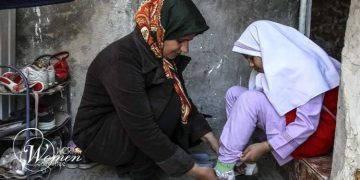In the Iranian legal system, where gender-based discrimination is deeply entrenched, women are not recognized as heads of household. As a result, when a woman becomes a widow, she is not only burdened with the emotional weight of her loss, but is also thrust into a web of economic, social, and legal challenges. In this context, widowhood becomes more than a personal tragedy—it is treated as a social stigma.
Widowed women are often marginalized and excluded from full participation in society. They face a host of legal obstacles, particularly in areas such as inheritance, child custody, property ownership, and access to insurance. The legal framework is overwhelmingly designed in favor of men, leaving widows vulnerable to systemic injustice and discrimination.
The Iranian regime does not even recognize International Widows’ Day on its calendar.
Contradictory Statistics and Lack of Transparency
According to the state-run Jahan-e Sanat newspaper, September 21, 2020, there are approximately 5.1 million widowed or divorced women in Iran. Previously, Shargh newspaper (July 4, 2011) had reported this number as 6 million.
According to the National Statistical Center of Iran and the 2006 national census, the number was 1.89 million—six times the number of widowed men.
In 2017, 15,000 widowed girls under the age of 15 were reported.























